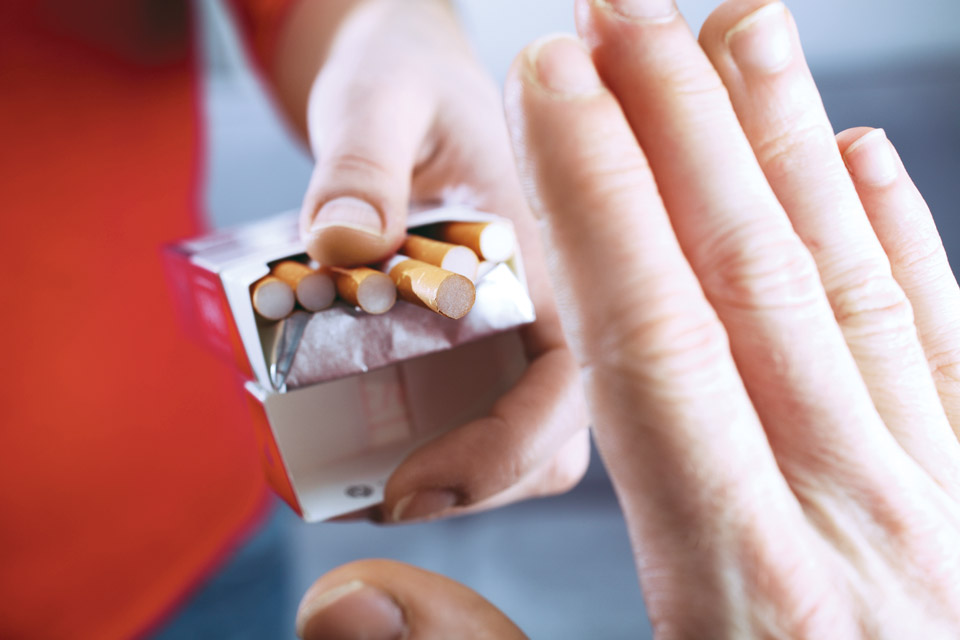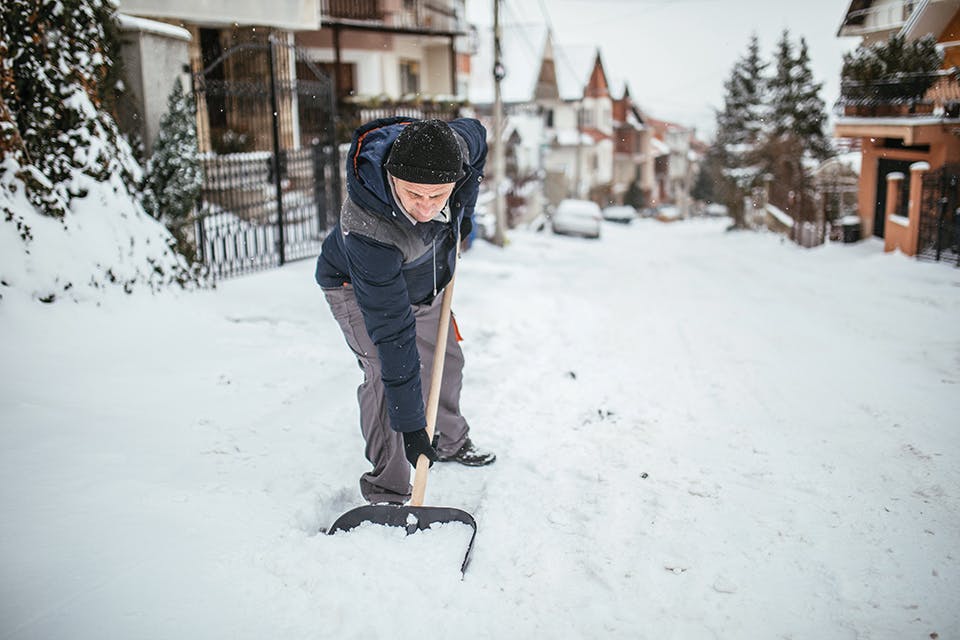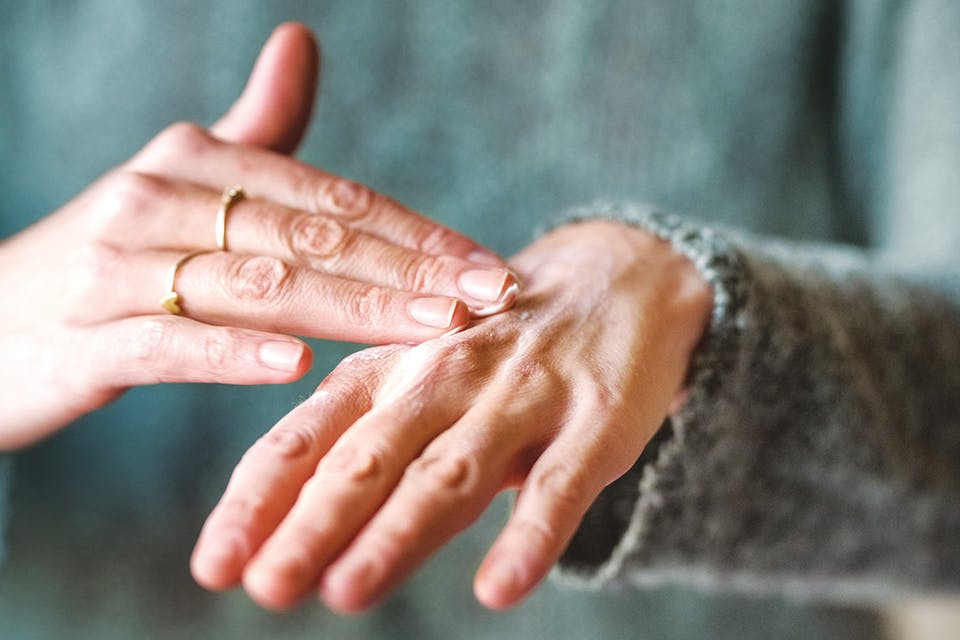Live Well Ohio: June 2015
Working outside in your yard can have real health benefits.
June 2015 Issue
BY Staff & Contributors | Photo by Istock
June 2015 Issue
BY Staff & Contributors | Photo by Istock
NEWS + NOTES: From the Ohio Department of Health
Safety Strategies
Keep a trip to the emergency room out of your summer plans.
Kids’ summertime fun should include cannonballs into the pool, bike rides to the park and plenty of outdoor games. But if parents don’t take precautions, it might also include a trip to the emergency room due to an unintentional injury.
According to the Centers for Disease Control and Prevention, unintentional injury is the leading cause of death for children and youth. Injury rates are highest during the summer months for children and teenagers because they are exposed to more risks. The majority of unintentional injuries and deaths from May through August involve drowning, biking, falls, motor-vehicle activities and pedestrian incidents.
While it’s every adult’s responsibility to keep kids safe in the summer, parents play a key role in protecting their children from injuries. Follow these simple tips and share them with your family and friends to protect children from summertime risks:
• Pay close attention to your children while they play in the pool, on the playground or in the backyard.
• Proper fitting safety gear is a must. Make sure your child wears a helmet for wheeled sports such as riding a bike, skating or cruising on a scooter. Life jackets are crucial for kids playing in open waters such as lakes and oceans and while riding on a boat.
• Be a safety role model. Children are more likely to follow safety rules when they see their parents doing so.
• Surround your pool or spa with a four-sided fence. The fence should be at least four feet high with self-closing, self-latching gates.
• Check for children around vehicles. Walk all the way around a parked vehicle to check for children before entering a car and starting the motor. Don’t let children play in driveways, streets, parking lots or unfenced yards adjacent to busy streets.
• Never leave kids alone in the car, not even for a minute. It takes only 10 minutes for the temperature of the inside of a car to rise by up to 20 degrees, even on overcast days.
• If you grill out, keep children away from the area while preheating and cooking, and while the grill is cooling.
• Remove potential poisons from your yard, including poisonous plants, pesticides and pool chemicals.
• Apply sunscreen rated SPF 15 or higher to your child’s exposed skin 15 to 30 minutes before going out and reapply frequently.
• Make sure you and your child drink plenty of water. Get immediate medical help any time a child’s skin is hot to the touch (with or without perspiration), if a child has a seizure or if they become disoriented in hot weather.
For more summer safety tips and more information about how you can prevent injuries, visit the Healthy Ohio website at healthy.ohio.gov or the Healthy Ohio Facebook page at facebook.com/healthyohio.
Smoke-Free Summer
Helping your kids stay tobacco free for life starts early.

As kids celebrate freedom from school, embrace the opportunity to promote their freedom from tobacco.
Most smokers take up the habit young (87 percent by age 18, 98 percent by age 26), so empowering youth to make healthy decisions is essential to stopping the tobacco use epidemic.
The Centers for Disease Control and Prevention estimates that if current rates of youth smoking continue, about 259,000 Ohio youth (age 17 and under) will become smokers and die prematurely as adults from a smoking-related illness.
Cigarette smoking is still one of the most common forms of tobacco use among youth, with about 4 out of every 30 Ohio high school students being current cigarette smokers in 2012. However, both national and Ohio surveys suggest that other tobacco products are emerging in importance.
According to the 2012 Ohio Youth Tobacco Survey, about 36 percent of Ohio high school students had tried cigarettes, about 31 percent had tried cigars, 20 percent had tried smokeless tobacco and over 15 percent had tried hookah and electronic cigarettes. The 2014 National Youth Tobacco Survey found that national e-cigarette use among middle and high school students tripled between 2013 and 2014 and now surpasses current use of every other tobacco product overall.
If you know a youth or adult who is interested in quitting tobacco, help them. Encourage them to call the Ohio Tobacco Quit Line at 1-800-QUIT-NOW (1-800-784-8669) or use the free online tobacco cessation tools at ohio.quitlogix.org.
***

Fresh Ideas
Cincinnati’s Northside Farmers Market doesn’t just bring healthy and local food to a city neighborhood that lost its only grocery store two years ago. It does so in a way that’s educational, inclusive and inspirational.
Every Wednesday evening, Jacob Hoffner Park comes alive as the Northside Farmers Market opens for business. Children gather for lessons on how to whip up a batch of creamy spinach soup and get a handle on culinary skills such as measuring. Their parents are learning from vendors how items from that week’s market can be used to make quick-but-healthy meals for the family.
What’s occurring in Cincinnati’s Northside neighborhood is happening across the country as people embrace the idea of eating fresh and local. But the farmers market means something more to those who live here. They lost access to such options when the only nearby grocery store closed its doors in 2013.
“So often, especially in low-income neighborhoods, the grocery store will be taken away, and then residents are left to shop at the corner store or the gas station,” says market manager Ana Bird. “Everyone deserves to be able to eat healthy food.”
What started in 2001 as a pop-up market — a handful of farmers meeting weekly in a parking lot to serve a core group of enthusiastic residents — has steadily grown into a place where families can purchase fresh and local food.
“Our turning point came in 2007, when the market hired its first part-time manager,” recalls Bird. “It made things more serious.”
As demand grew, and as space became available at the North Presbyterian Church not far from the park, the market became year round starting in 2009. Three years ago, it became a nonprofit organization affiliated with the Northside Community Council, which allowed the market to begin accepting electronic benefit transfer cards for customers who receive state food assistance.
“That was our next big step in terms of being able to reach more people and be more of a valid shopping source in the neighborhood,” says Bird.
Now, instead of taking a long bus ride to the nearest grocery store, residents can shop locally for leeks, radishes, lettuces, nuts, fresh baked bread, honey, eggs and meats — nearly all grown or produced within a 70-mile radius.
“A struggle, of course, is that most people feel that a farmers market is usually for more affluent customers,” Bird says. “And there are definitely items at the farmers market that are too expensive for a low income rate.”
Last year, the Cincinnati Health Department worked with Hamilton County’s Ohio State University Extension to create Produce Perks. The matching program allows those on food assistance who use the EBT card to receive a dollar-for-dollar match up to $10, as a way to encourage the purchase of more fresh fruits and vegetables. The Northside Farmers Market was one of six markets to take part in the pilot program last year, which has returned for 2015.
But it’s also the small details that make the Northside Farmers Market a comfortable place to shop for everyone. “We have the token system for accepting [public assistance] cards, but we also accept credit and debit cards, so there are actually two different token systems. One is red and one is green,” explains Bird. “That cuts down on the feeling of being singled out because you have to pay with a wooden token.”
Bird and her crew also realize there are some residents who are not yet familiar with all the market has to offer. So, she actively looks for events that will attract people who may not be ready to shop there regularly but are curious. For example, Bird brings in experts to host nutrition workshops and cooking demonstrations that allow even the most amateur cooks the chance to head home with an easy-to-make recipe.
“I think farmers markets make you feel like you are part of something bigger in your community,” she says. “You develop those relationships with the farmers and start to realize that you are a part of this great system. I would venture to say that our customers feel the same way.”
***
Workout Plan
Approach your summer chores with a little more glee this season. Three experts share how common tasks around the home add up to real health benefits.
Summer always brings a long list of outdoor projects, but you can burn some serious calories working on your home’s curb appeal. “These chores can be just as good as exercise — it just depends on the intensity that you approach the activity with,” explains Carol Mabry, program coordinator at the OhioHealth MedCentral Health and Fitness Center in Ontario. “Think of trying to work up to a moderate pace where you are breathing a little bit heavier, the heart is beating a little bit faster and you can feel those muscles working.” Here’s how five common jobs stack up.
Gardening:
“Working in the garden, especially when we are getting those flower beds ready, and you have all of that hoeing and bending and cleaning out of the winter debris, is pretty strenuous exercise,” says Mabry. “It is not only going to help you in getting your heart rate up a little bit and getting a little bit of cardiovascular exercise in, but it really helps in toning those muscles as well.” Mabry encourages a good warm up for this activity, which can burn up to 320 calories an hour, as well as stretching afterward to stave off sore muscles.
Window Washing:
“Washing windows will burn about 120 to 130 calories per hour,” says Jim Kolar, manager of Portsmouth’s Southern Ohio Medical Center’s Life Center. “That would be about the same as a leisurely walk. It involves many different movements and involves many different muscle groups — the pectorals, deltoids, extensors, triceps and biceps among others.” You’ll also work your core and lower body muscles while standing to support your body while doing the job. “This would be considered a total-body exercise,” adds Kolar.
Mowing the Lawn:
Keep the riding mower in the garage, and pull out the push mower for maximum health benefits. “If you’re using a push mower, you’re going to burn around 400 calories per hour,” says Mabry, explaining that you’re getting your standard walking exercise but with the benefit of the added weight from the mower. “Think about it like an elliptical trainer. ... This isn’t quite as rhythmic, but you are still pushing and then you need to back up and then you need to mow in, so you do get that push and pull as you work around corners and flower beds and trees.”
Cleaning the Car:
“The process of washing, waxing and vacuuming the car burns approximately 135 calories an hour,” says Burton Rogers Jr., regional administrative director for sports medicine at Mercy health system in Toledo. “Scrubbing and hosing require the recruitment of the core, upper extremities and the muscles that stabilize the shoulder blade. The famous line in ‘The Karate Kid,’ — ‘wax on, wax off’ — references this movement.” To amp up the calories expended, Rogers suggests getting out the vacuum cleaner. “[It] makes it a greater task as the vacuum cleaner must be retrieved, returned and then you are climbing in and out of the car. Moreover, the vacuum cleaner must be lugged up and down stairs, which also increases demand and caloric expenditure.”
Painting:
Any painting project — the shed, fence or house — can get you toned and burn around 135 calories per hour, according to Rogers. “There are many variables, which can increase or decrease the [calories] that are burned,” he explains. “If the painting project requires a ladder, retrieving and putting away the ladder will require greater energy expenditure. Of course, climbing the ladder will work against gravity and will increase caloric burn.” Rogers also notes the bending, stooping and even the ability to stand stationary on the ladder are all movements that call on your muscles to get the job done.
***
No Smoking
Certified tobacco cessation counselor Anne Shearer helps people kick the habit once and for all. She knows it isn’t easy. She also knows what works.
All smokers know the effect their habit has on their health, but that wealth of information is often of little help when it comes to finally kicking the habit. “Smoking is so embedded into a smoker’s lifestyle, into every little aspect of it. Often it takes at least seven times of trying to get it right,” says smoking cessation counselor Anne Shearer (left), registered respiratory therapist and certified tobacco treatment specialist at Dublin Methodist Hospital. “Having a plan in place, having a support system, being educated, having positive thinking, knowing your resources and being counseled — all of that is what is needed to actually quit.” We talk to Shearer about how she helps her clients find fresh air.
What are the most successful strategies for quitting?
Quitting is not something that is done overnight. It took years and years to build up to this addiction. ... Now we have to undo all of those years. It takes time. In counseling, we get down to the nitty-gritty to get them prepared. We look at every single thing that they do, every hour, whenever they go to smoke and try to find an alternative. We clean the house. If you smoke in the house, we are getting rid of everything — ashtrays and wherever you hide your cigarettes, so that there is no temptation. We also clean another type of environment, which includes friends. We are cleaning out people and situations. Openness and willingness to change can be very vulnerable, so I really teach empowerment and taking responsibility — admitting that nobody put the cigarette in your mouth and told you to smoke it.
What about medications and nicotine-replacement products? Are these effective in helping smokers quit?
Today’s trend is combining the therapies. So, you could use the nicotine gum or the patch and still take a prescription medication such as Zyban or Chantix, and they have found the results of this to be very good. With the nicotine replacement, you’re still getting nicotine but you are slowly decreasing the amount that you are using. The prescriptions actually block the effects of nicotine.
What about the vapor products? Are these helpful?
When these first came out and they were not FDA regulated, we had no idea what chemicals were in them. A lot of us [thought] it was better than smoking a cigarette because we know how many thousands of chemicals are in those. But now they are finding chemicals in [the vapor products] that were not advertised. ... I find them dangerous.
When someone quits, what happens within the body?
Twenty minutes after you quit smoking, your heart rate drops back to normal and it can stay there. Twelve hours after you quit, the carbon monoxide level in your blood drops back down to normal. Two weeks to three months after quitting, your risk of having a heart attack goes down and your lung function begins to improve. ... I try to make clients think about seeing their kids getting married, having grandkids, going on that trip. You are going to be healthy, you are going to have the stamina, you are going to be able to run up that mountain and feel really good about it, and that is what you did for yourself.
Related Articles

Live Well Jan./Feb. 2024
How to prevent common hazards in and around the home and cold weather arrives. Plus, Dublin resident Greg Ruf shares his work to bring awareness to a lesser-known heart condition. READ MORE >>

Live Well Ohio: Nov.-Dec. 2023
Follow these five strategies to help combat dry skin this winter, and learn the lifestyle modifications that can help those at risk for developing diabetes. READ MORE >>

Live Well Ohio: July/August 2023
The Ohio Department of Natural Resources offers advice for staying safe on Ohio’s inland lakes, and a doctor shares how to help protect the health of your brain. READ MORE >>



